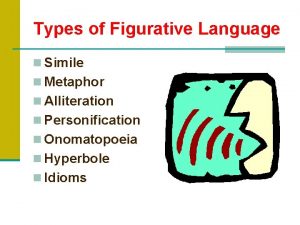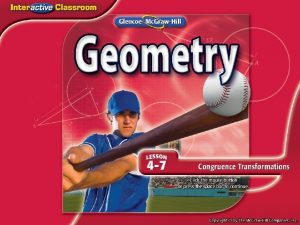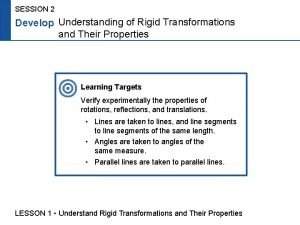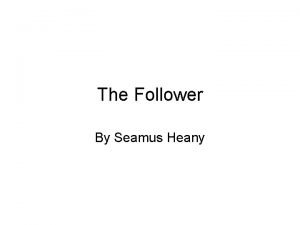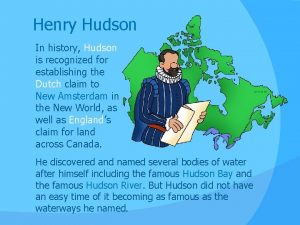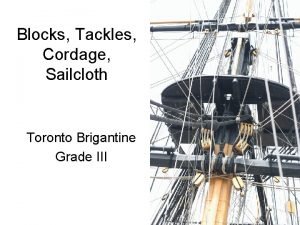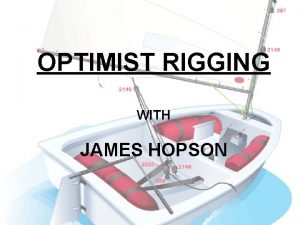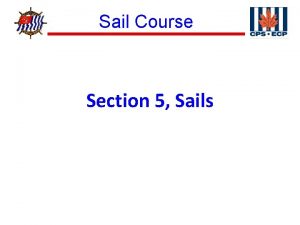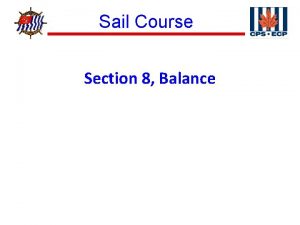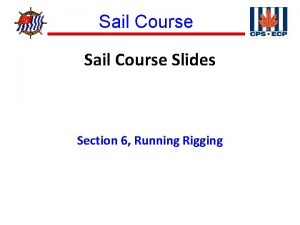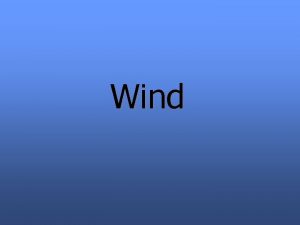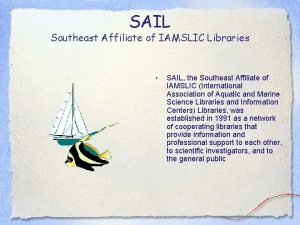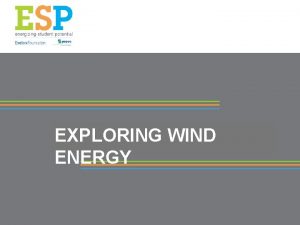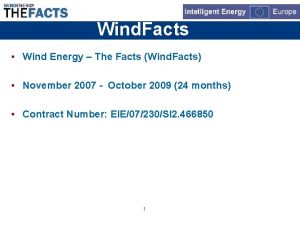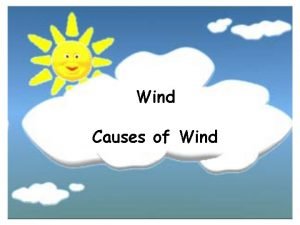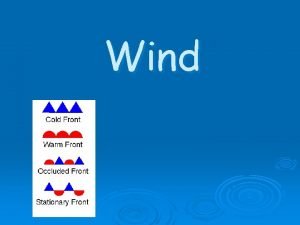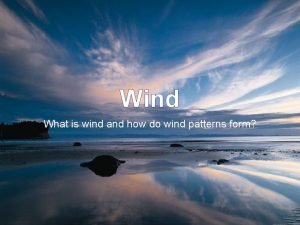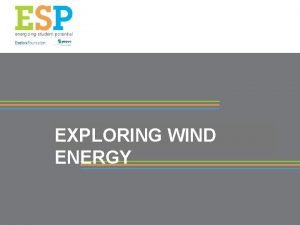Sail Course Section 9 Wind Sail Course Figure



















- Slides: 19

® Sail Course Section 9, Wind

® Sail Course Figure 9– 1 Thermally-induced Breezes

® Sail Course Figure 9– 2 Wind as it Approaches Shore

® Sail Course

® Figure 9– 4 Sea Breeze Sail Course

® Figure 9– 5 Land Breeze Sail Course

® Figure 9– 6 Boat Wind Sail Course

® Figure 9– 7 Apparent Wind Sail Course

® Figure 9– 8 Close-hauled Sail Course

® Sail Course Figure 9– 9 True Wind Abeam

® Figure 9– 10 Broad Reach Sail Course

® Figure 9– 11 Running Sail Course

® Sail Course Figure 9– 12 Resolving Wind Forces

® Sail Course Figure 9– 13 Wind Force

® Sail Course Figure 9– 14 Leeway

® Sail Course Figure 9– 15 Effect of Trim

® Sail Course Figure 9– 16 Effect of Heading

® Sail Course Vocabulary Apparent Wind. The vector sum of the true wind and the wind created by the movement of the boat. Wind direction and speed as they appear to an observer on a moving boat. Wake. Water surface turbulence left by a moving boat. Attached Flow. The movement of particles along a surface, such as the flow of air particles along the leeward side of a sail. Back. Change in the direction of the wind in a counterclockwise direction in the northern hemisphere and a clockwise direction in the southern hemisphere. See “Veer. ” Boat Wind. The so-called wind produced by the movement of the boat through the water. Fall Off. To change course so as to bring the relative wind direction farther aft. Header. A wind that shifts ahead of a boat sailing close-hauled, forcing it to change course to avoid pinching or luffing. Usually a good time to tack. Puff. A short gust of wind. Speed Gradient. A marked difference in speed between two adjacent winds. Vector. A quantity that has both magnitude and direction, commonly represented by an arrow. The length of the arrow represents the magnitude; the direction in which the arrow flies represents the direction in which the quantity acts. Veer. Change in direction of the wind in a clockwise direction in the Northern Hemisphere and a counterclockwise direction in the Southern Hemisphere. See “Back. ”

® Sail Course End of Section 9 Slides
 Kurshalter
Kurshalter James ran like a cheetah which figure of speech
James ran like a cheetah which figure of speech Introduction to personification
Introduction to personification Wind yells while blowing figure of speech
Wind yells while blowing figure of speech The angry clouds marched across the sky figure of speech
The angry clouds marched across the sky figure of speech Nine section perm
Nine section perm Identify the type of congruence transformation
Identify the type of congruence transformation How to do 6 figure grid references
How to do 6 figure grid references Figure abcde is similar to figure vwxyz
Figure abcde is similar to figure vwxyz What is the name of the solid figure
What is the name of the solid figure Polished sod
Polished sod Solid sail
Solid sail Who sailed the ocean blue in 1492
Who sailed the ocean blue in 1492 Why did the athenians sail to nearby islands in panic
Why did the athenians sail to nearby islands in panic Henry hudson early years
Henry hudson early years Enjambment meaning poetry
Enjambment meaning poetry Which route did bartolomeu dias sail? a b c d
Which route did bartolomeu dias sail? a b c d Sail wagon epoch
Sail wagon epoch How a sail works
How a sail works Rigging an optimist
Rigging an optimist



